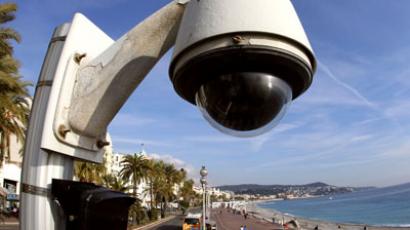FBI seeks to ID suspects with video recognition technology

The Federal Bureau of Investigation is asking for help in developing “a roadmap for the FBI's future video analytics architecture” as the agency prepares to make their high-tech surveillance abilities all the more powerful.
The FBI took to the Federal Business Opportunities website last week to publish a request for information that will be used by the agency as it works towards increasing its capabilities with regards to taking live and recorded video and using that information to identify persons and places of interest.
The post was first spotted by NextGov’s Aliya Sternstein, who wrote of the solicitation for the website’s Emerging Tech section on Monday, six days after the request itself was published on FedBizOpps.gov.
According to the actual solicitation, the FBI claims it is in the midst of studying how video and digital image processing can be combined with analytic capabilities, and is now encouraging vendors to showcase their own surveillance tools.
“Think of it as automated police lineups for the YouTube generation,” Sternstein wrote.
“As part of the study, the FBI is investigating commercial technologies and capabilities across the video processing and video analytics spectrum,” the solicitation reads. To accomplish as much, the agency is planning on hosting a “Video Processing and Analytics Industry Day” next month at the bureau’s Washington, DC headquarters within the J. Edgar Hoover Building. There, vendors approved to attend will present their products to senior FBI officials, as well as federal technicians and other agents from related offices “with an interest in advanced video/image processing and analytics.”
Of particular interest to the FBI, the bureau noted in their request, are vendors who can provide the nation’s top law enforcement agency with the abilities to ingest and store huge mounds of data that can then be cataloged, analyzed and automatically filtered.
The FBI has included a laundry list of disciplines it hopes to explore by parties interested in attending the Dec. 11 event, including the ability to “Measure and present similarity information relating to face recognition, facial attributes, pedestrian recognition, vehicle recognition, license plate recognition or general image similarity.” That discipline, according to the FBI, would involve the re-identification of individuals, vehicles and objects, as well as aid in detecting human behavior characteristics.
“The desired connect-the-dots abilities include computing the degree of similarity among pedestrians, graffiti designs, buildings in the background of photos and other recurring images in videos and stills,” Sternstein added for NextGov.
Indeed, analytics with regards to massive troves of mined data pertaining to millions of Americans is not anything new for the FBI. As RT reported extensively in the post, the agency is currently in the midst of readying full deployment of its Next Generation Identification system, which will upgrade the bureau’s current fingerprint system to include ultra-specific biometric information on citizens, including information about their irises and other facial features.
By bringing similar facial-recognition technologies to the bureau’s headquarters, the FBI could develop the architecture that will allow federal law enforcement to monitor live video to look for persons of interest and then scour that data to single out individuals.
The Electronic Privacy Information Center, a DC-based advocacy group specializing in surveillance issues, has already sued the FBI in hopes of obtaining more information on the NGI program, slated to be fully launched in 2014. As the agency looks to acquire new abilities, though, watchdog groups like EPIC could be filing new paperwork to get details published about the FBI’s other interests.














